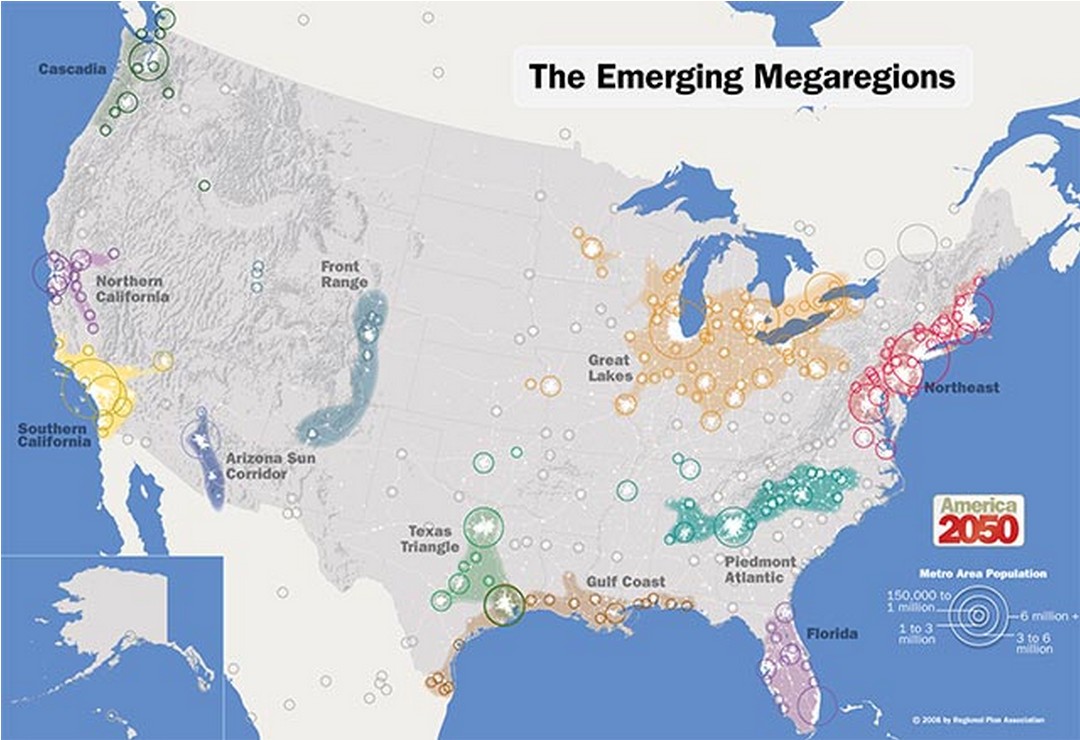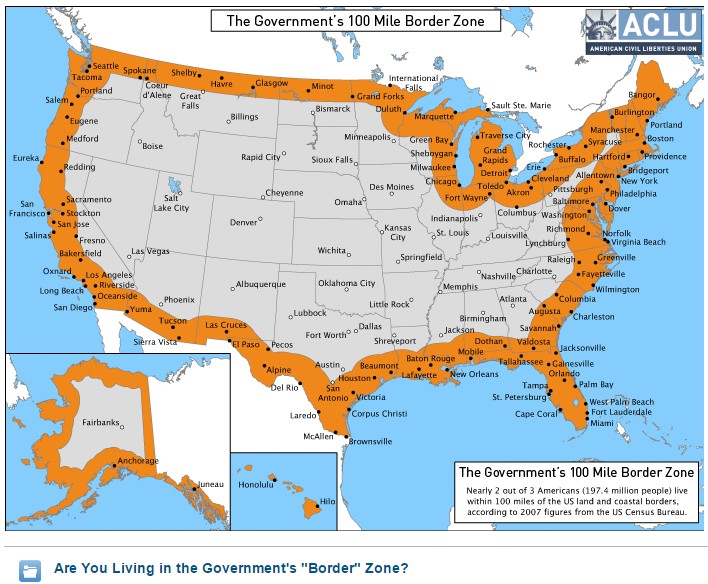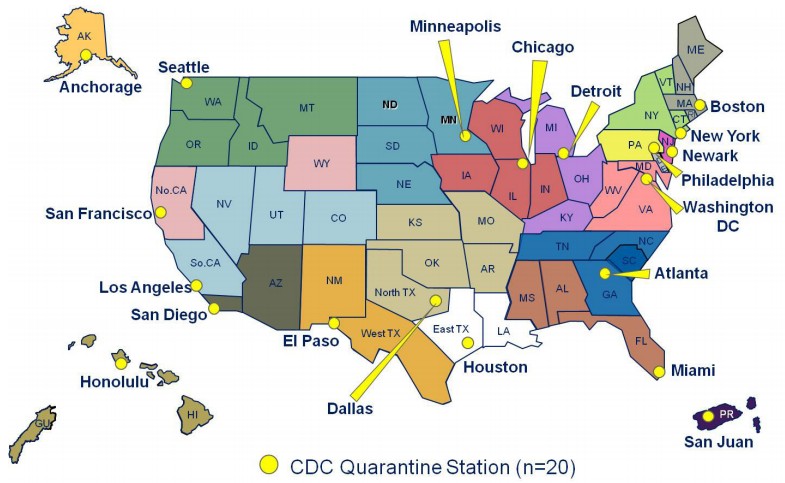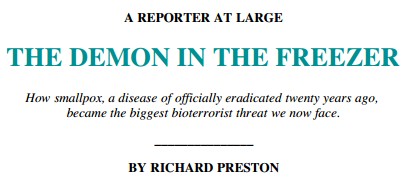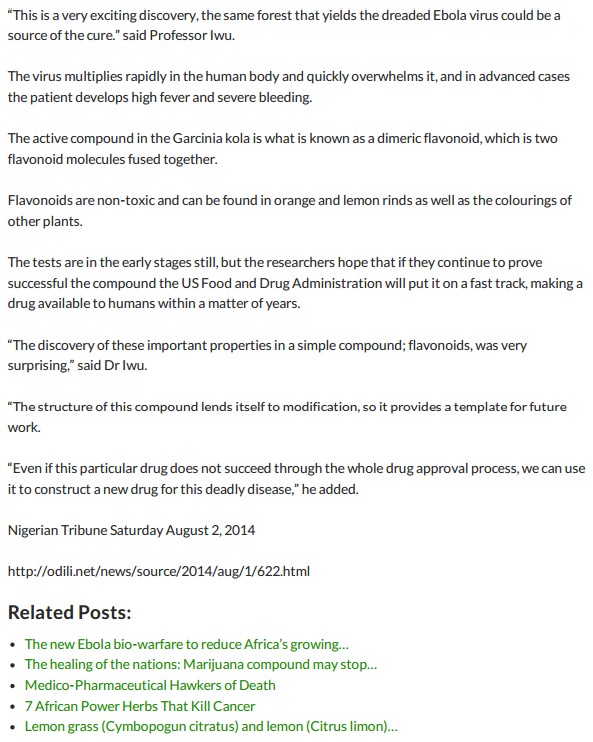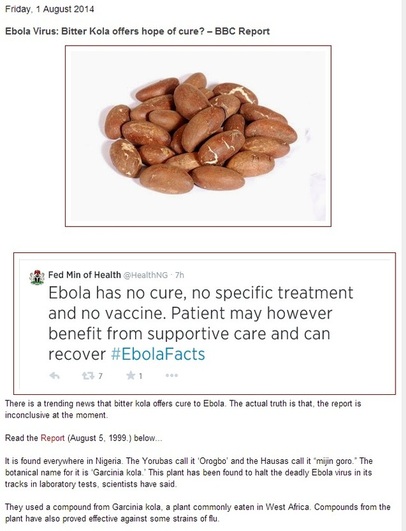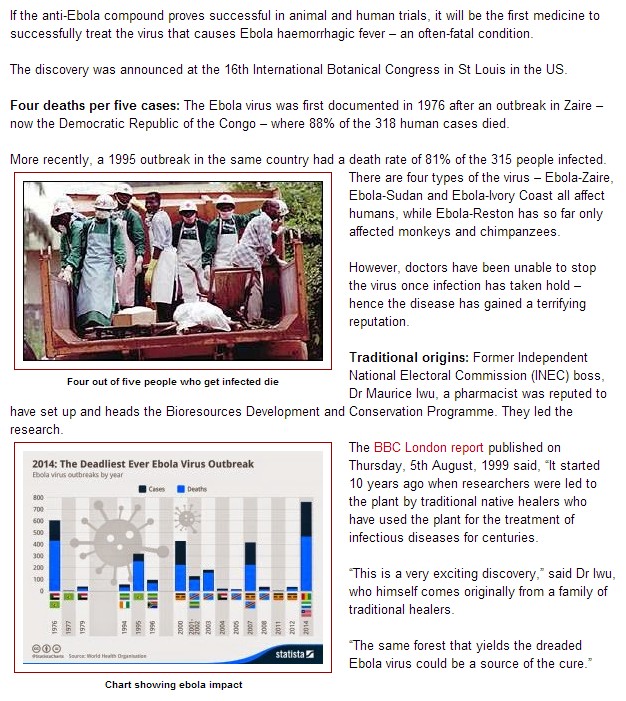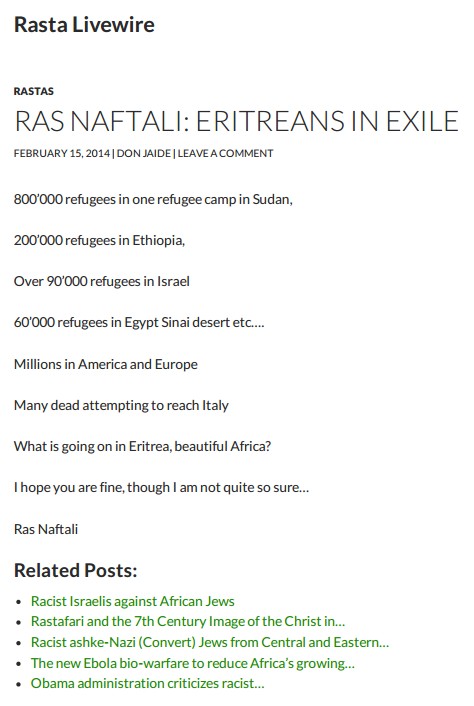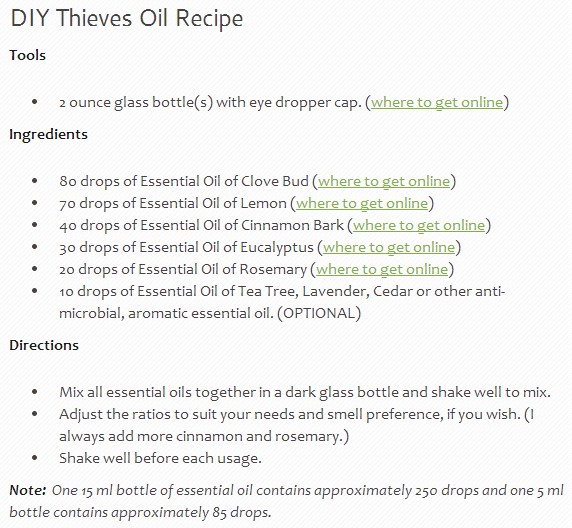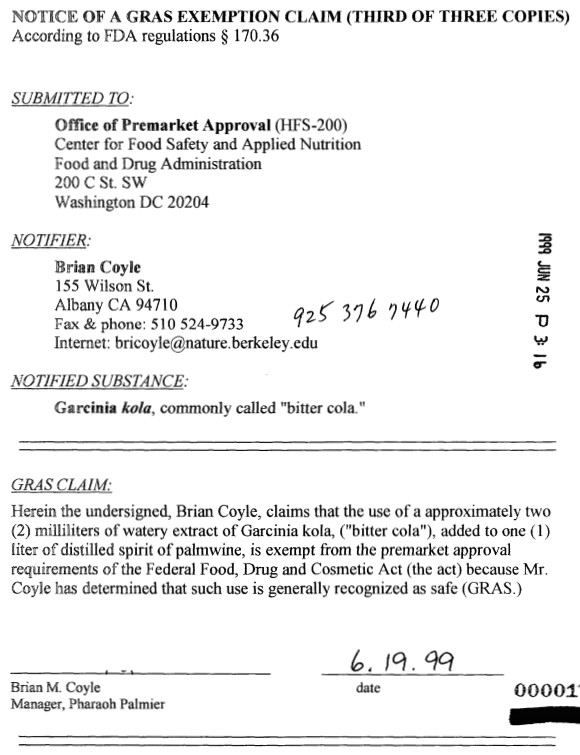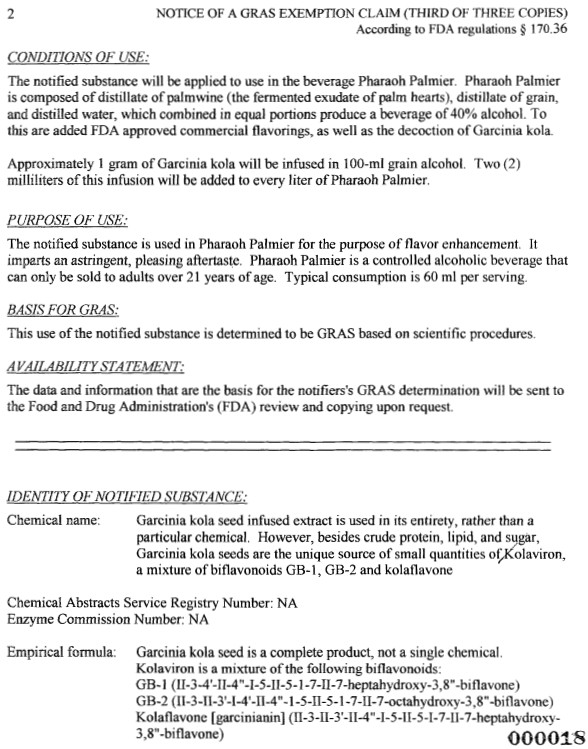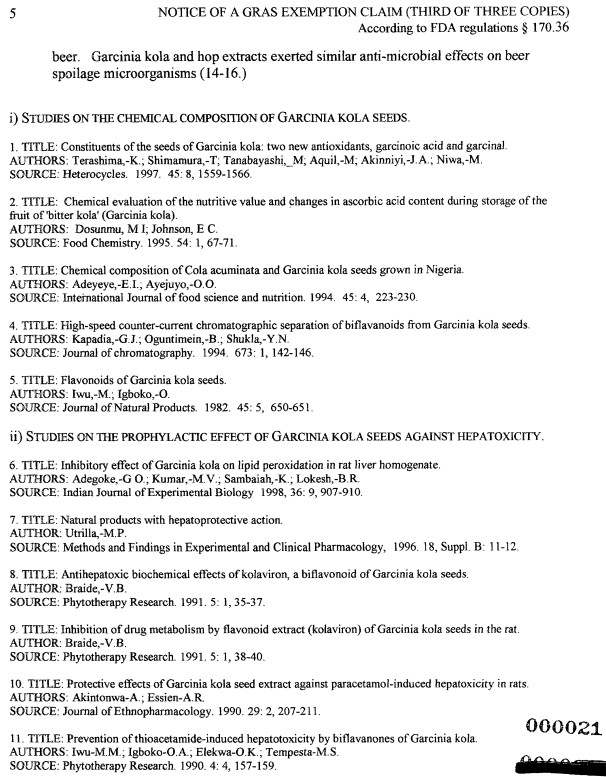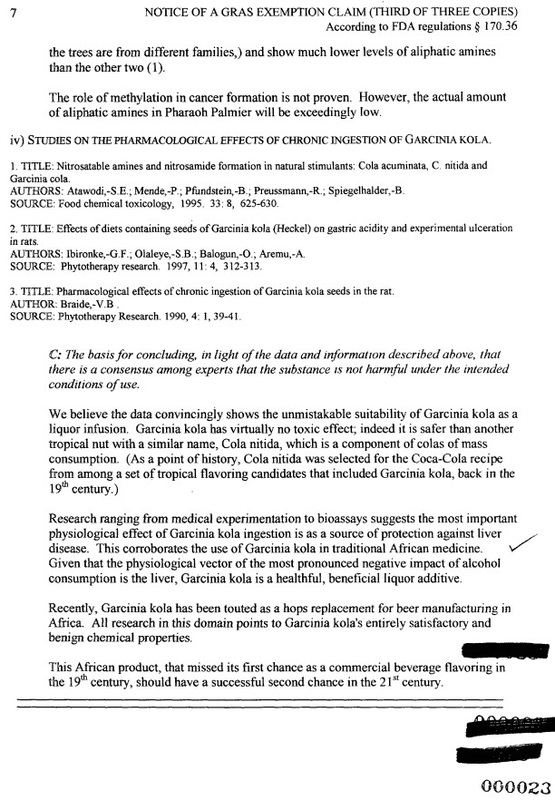EBOLA WILL NOT KILL EVERYONE: Know what will... (Viral Hemorrhagic Fever) Ultraviolet Light Kilsl Ebola by Scott A_nthony

Why haven't we heard Ebola can also be carried by pigs and reported 3 'animal' Ebola cases in the U.S. This map will probably be updated constantly by WHO daily, if you want to keep for your record and personal research and comparison. Below is WHO info site re Ebola. Another saying more than 1 type of Ebola, appears natural vs manufactured. Remember the swine flu and bird flu attempted disaster was stopped by numerous. The dark Luciferian cabal/Zionist/Illuminati/Reptillians/Greys. are not going to win on their depopulation program to 500 million. Possibility the disease will also be in the planned vaccine inoculation, which has been done before?, and also could be possibly carried by the children in the U.S., from So. America, to be transferred throughout the U.S., where some are being given various shots. ....Anonymous
|
SHOCKING: Ebola CDC Quarantine Map Matches Immigration/Agenda 21 Maps+Yellowstone Connection? by Red Pill Revolution
|
2 Maps (Below) from the Jericho Series.
Ebola (KolaBitterKola/Facebook)
|
Alfred Webre: Expose massive Ebola/Martial Law false flag and prevent mega depopulation
|
Joseph Moshe H5N1 Ukraine Plague Warning
The Demon in the Freezer pdf
|
Why does the CDC own a patent on Ebola 'invention?'
Learn more: http://www.naturalnews.com/046290_Ebola_patent_vaccines_profit_motive.html#ixzz39cFZayHa
Sunday, August 03, 2014
by Mike Adams, the Health Ranger
(NaturalNews) The U.S. Centers for Disease Control owns a patent on a particular strain of Ebola known as "EboBun." It's patent No. CA2741523A1 and it was awarded in 2010. You can view it here. (Thanks to Natural News readers who found this and brought it to our attention.)
Patent applicants are clearly described on the patent as including:
The Government Of The United States Of America As Represented By The Secretary, Department Of Health & Human Services, Center For Disease Control.
The patent summary says, "The invention provides the isolated human Ebola (hEbola) viruses denoted as Bundibugyo (EboBun) deposited with the Centers for Disease Control and Prevention ("CDC"; Atlanta, Georgia, United States of America) on November 26, 2007 and accorded an accession number 200706291."
It goes on to state, "The present invention is based upon the isolation and identification of a new human Ebola virus species, EboBun. EboBun was isolated from the patients suffering from hemorrhagic fever in a recent outbreak in Uganda."
It's worth noting, by the way, that EboBun is not the same variant currently believed to be circulating in West Africa. Clearly, the CDC needs to expand its patent portfolio to include more strains, and that may very well be why American Ebola victims have been brought to the United States in the first place. Read more below and decide for yourself...
Harvesting Ebola from victims to file patentsFrom the patent description on the EboBun virus, we know that the U.S. government:
1) Extracts Ebola viruses from patients.
2) Claims to have "invented" that virus.
3) Files for monopoly patent protection on the virus.
To understand why this is happening, you have to first understand what a patent really is and why it exists. A patent is a government-enforced monopoly that is exclusively granted to persons or organizations. It allows that person or organization to exclusively profit from the "invention" or deny others the ability to exploit the invention for their own profit.
It brings up the obvious question here: Why would the U.S. government claim to have "invented" Ebola and then claim an exclusively monopoly over its ownership?
U.S. Government claims exclusive ownership over its "invention" of EbolaThe "SUMMARY OF THE INVENTION" section of the patent document also clearly claims that the U.S. government is claiming "ownership" over all Ebola viruses that share as little as 70% similarity with the Ebola it "invented":
...invention relates to the isolated EboBun virus that morphologically and phylogenetically relates to known members filoviridae... In another aspect, the invention provides an isolated hEbola EboBun virus comprising a nucleic acid molecule comprising a nucleotide sequence selected from the group consisting of: a) a nucleotide sequence set forth in SEQ ID NO: 1; b) a nucleotide sequence that hybridizes to the sequence set forth in SEQ ID NO: 1 under stringent conditions; and c) a nucleotide sequence that has at least 70%, 75%, 80%, 85%, 90%, 95%, 96%, 97%, 98%, or 99% identity to the SEQ ID NO:
1. In another aspect, the invention provides the complete genomic sequence of the hEbola virus EboBun.
Ebola vaccines and propagationThe CDC patent goes on to explain it specifically claims patent protection on a method for propagating the Ebola virus in host cells as well as treating infected hosts with vaccines:
In another aspect, the invention provides a method for propagating the hEbola virus in host cells comprising infecting the host cells with the inventive isolated hEbola virus described above, culturing the host cells to allow the virus to multiply, and harvesting the resulting virions.
In another aspect, the invention provides vaccine preparations, comprising the inventive hEbola virus, including recombinant and chimeric forms of the virus, nucleic acid molecules comprised by the virus, or protein subunits of the virus. The invention also provides a vaccine formulation comprising a therapeutically or prophylactically effective amount of the inventive hEbola virus described above, and a pharmaceutically acceptable carrier.
No medical reason to bring Ebola to the United StatesThis patent may help explain why Ebola victims are being transported to the United States and put under the medical authority of the CDC. These patients are carrying valuable intellectual property assets in the form of Ebola variants, and the Centers for Disease Control clearly desires to expand its patent portfolio by harvesting, studying and potentially patenting new strains or variants.
Dr. Bob Arnot, an infectious disease specialist who spent time on the ground in developing nations saving lives, recently told Judge Jeanine, "There is no medical reason to bring them here, especially when you see how well Dr. Bradley was." (2)
There is, however, an entirely different reason to bring Ebola patients to America: so they can be exploited for medical experiments, military bioweapons harvesting or intellectual property claims.
Surely, medical authorities at Emory University and the CDC are working hard to save the lives of the two patients who have been transported to the U.S. But they are also pursuing something else at the same time: an agenda of isolating, identifying and patenting infectious disease agents for reasons that we can only imagine.
Only hoping to save lives?On one hand, it's worth pointing out that the CDC's patent on Ebola is at least partially focused on methods for screening for Ebola and treating Ebola victims with drugs or vaccines. This seems like a worthwhile precaution against an infectious disease that clearly threatens lives.
On the other hand, why the patent? Patenting Ebola seems as odd as trying to patent cancer or diabetes. Why would a government organization claim to have "invented" this infectious disease and then claim a monopoly over its exploitation for commercial use?
Does the CDC hope to collect a royalty on Ebola vaccines? Is it looking to "invent" more variants and patent those too?
Make no mistake that billions of dollars in profits are at stake in all this. Shares of Tekmira surged over 11% last Friday as pressure was placed on the FDA to fast-track Ebola vaccine trials the company has set up. "Health campaigners have started a petition which has already been signed by approximately 15,500 people on change.org pressurizing FDA to approve the drug in the minimum possible time frame," reports BidnessEtc.com. (3)
Carefully scripted medical theaterWith this, we start to see the structure of the elaborate medical theater coming together: A global pandemic panic, a government patent, the importation of Ebola into a major U.S. city, an experimental vaccine, the rise of a little-known pharmaceutical company and a public outcry for the FDA to fast-track the vaccine.
If Act II stays on course, this medical theater might someday involve a "laboratory accident" in a U.S. lab, the "escape" of Ebola into the population, and a mandatory nationwide Ebola vaccination campaign that enriches Tekmira and its investors while positioning the CDC with its virus patents as the "savior of the American people."
Yes, we've heard this music before, but the last time around it was called Swine Flu.
The formula is always the same: create alarm, bring a vaccine to market, then scare governments into buying billions of dollars worth of vaccines they don't need.
Watch the episode with Judge Jeanine here:
Learn more: http://www.naturalnews.com/046290_Ebola_patent_vaccines_profit_motive.html#ixzz39cFZayHa
Sunday, August 03, 2014
by Mike Adams, the Health Ranger
(NaturalNews) The U.S. Centers for Disease Control owns a patent on a particular strain of Ebola known as "EboBun." It's patent No. CA2741523A1 and it was awarded in 2010. You can view it here. (Thanks to Natural News readers who found this and brought it to our attention.)
Patent applicants are clearly described on the patent as including:
The Government Of The United States Of America As Represented By The Secretary, Department Of Health & Human Services, Center For Disease Control.
The patent summary says, "The invention provides the isolated human Ebola (hEbola) viruses denoted as Bundibugyo (EboBun) deposited with the Centers for Disease Control and Prevention ("CDC"; Atlanta, Georgia, United States of America) on November 26, 2007 and accorded an accession number 200706291."
It goes on to state, "The present invention is based upon the isolation and identification of a new human Ebola virus species, EboBun. EboBun was isolated from the patients suffering from hemorrhagic fever in a recent outbreak in Uganda."
It's worth noting, by the way, that EboBun is not the same variant currently believed to be circulating in West Africa. Clearly, the CDC needs to expand its patent portfolio to include more strains, and that may very well be why American Ebola victims have been brought to the United States in the first place. Read more below and decide for yourself...
Harvesting Ebola from victims to file patentsFrom the patent description on the EboBun virus, we know that the U.S. government:
1) Extracts Ebola viruses from patients.
2) Claims to have "invented" that virus.
3) Files for monopoly patent protection on the virus.
To understand why this is happening, you have to first understand what a patent really is and why it exists. A patent is a government-enforced monopoly that is exclusively granted to persons or organizations. It allows that person or organization to exclusively profit from the "invention" or deny others the ability to exploit the invention for their own profit.
It brings up the obvious question here: Why would the U.S. government claim to have "invented" Ebola and then claim an exclusively monopoly over its ownership?
U.S. Government claims exclusive ownership over its "invention" of EbolaThe "SUMMARY OF THE INVENTION" section of the patent document also clearly claims that the U.S. government is claiming "ownership" over all Ebola viruses that share as little as 70% similarity with the Ebola it "invented":
...invention relates to the isolated EboBun virus that morphologically and phylogenetically relates to known members filoviridae... In another aspect, the invention provides an isolated hEbola EboBun virus comprising a nucleic acid molecule comprising a nucleotide sequence selected from the group consisting of: a) a nucleotide sequence set forth in SEQ ID NO: 1; b) a nucleotide sequence that hybridizes to the sequence set forth in SEQ ID NO: 1 under stringent conditions; and c) a nucleotide sequence that has at least 70%, 75%, 80%, 85%, 90%, 95%, 96%, 97%, 98%, or 99% identity to the SEQ ID NO:
1. In another aspect, the invention provides the complete genomic sequence of the hEbola virus EboBun.
Ebola vaccines and propagationThe CDC patent goes on to explain it specifically claims patent protection on a method for propagating the Ebola virus in host cells as well as treating infected hosts with vaccines:
In another aspect, the invention provides a method for propagating the hEbola virus in host cells comprising infecting the host cells with the inventive isolated hEbola virus described above, culturing the host cells to allow the virus to multiply, and harvesting the resulting virions.
In another aspect, the invention provides vaccine preparations, comprising the inventive hEbola virus, including recombinant and chimeric forms of the virus, nucleic acid molecules comprised by the virus, or protein subunits of the virus. The invention also provides a vaccine formulation comprising a therapeutically or prophylactically effective amount of the inventive hEbola virus described above, and a pharmaceutically acceptable carrier.
No medical reason to bring Ebola to the United StatesThis patent may help explain why Ebola victims are being transported to the United States and put under the medical authority of the CDC. These patients are carrying valuable intellectual property assets in the form of Ebola variants, and the Centers for Disease Control clearly desires to expand its patent portfolio by harvesting, studying and potentially patenting new strains or variants.
Dr. Bob Arnot, an infectious disease specialist who spent time on the ground in developing nations saving lives, recently told Judge Jeanine, "There is no medical reason to bring them here, especially when you see how well Dr. Bradley was." (2)
There is, however, an entirely different reason to bring Ebola patients to America: so they can be exploited for medical experiments, military bioweapons harvesting or intellectual property claims.
Surely, medical authorities at Emory University and the CDC are working hard to save the lives of the two patients who have been transported to the U.S. But they are also pursuing something else at the same time: an agenda of isolating, identifying and patenting infectious disease agents for reasons that we can only imagine.
Only hoping to save lives?On one hand, it's worth pointing out that the CDC's patent on Ebola is at least partially focused on methods for screening for Ebola and treating Ebola victims with drugs or vaccines. This seems like a worthwhile precaution against an infectious disease that clearly threatens lives.
On the other hand, why the patent? Patenting Ebola seems as odd as trying to patent cancer or diabetes. Why would a government organization claim to have "invented" this infectious disease and then claim a monopoly over its exploitation for commercial use?
Does the CDC hope to collect a royalty on Ebola vaccines? Is it looking to "invent" more variants and patent those too?
Make no mistake that billions of dollars in profits are at stake in all this. Shares of Tekmira surged over 11% last Friday as pressure was placed on the FDA to fast-track Ebola vaccine trials the company has set up. "Health campaigners have started a petition which has already been signed by approximately 15,500 people on change.org pressurizing FDA to approve the drug in the minimum possible time frame," reports BidnessEtc.com. (3)
Carefully scripted medical theaterWith this, we start to see the structure of the elaborate medical theater coming together: A global pandemic panic, a government patent, the importation of Ebola into a major U.S. city, an experimental vaccine, the rise of a little-known pharmaceutical company and a public outcry for the FDA to fast-track the vaccine.
If Act II stays on course, this medical theater might someday involve a "laboratory accident" in a U.S. lab, the "escape" of Ebola into the population, and a mandatory nationwide Ebola vaccination campaign that enriches Tekmira and its investors while positioning the CDC with its virus patents as the "savior of the American people."
Yes, we've heard this music before, but the last time around it was called Swine Flu.
The formula is always the same: create alarm, bring a vaccine to market, then scare governments into buying billions of dollars worth of vaccines they don't need.
Watch the episode with Judge Jeanine here:
The Pros & Cons of Kola Nuts
Source LINK
Bitter Kola a/k/a Garcinia Kola (Common Names: Bissy, kola nut, colero, cola acuminata, Cola Vera, Cola nitida)
and is a seed part from a tree from the Sterculiaceae family - The kola tree grows to approximately 40 ft (12 m) in height, and has white to yellow flowers with spots that range from red to purple. The kola tree's leaves are 6–8 in long (15–20 cm) and the tree bears fruit that is shaped like a star. Inside the fruit, about a dozen round or square seeds can be found in a white seed shell. (Kola nut also contains tannins, phenolics, phlobaphens, kola red, betaine, protein, starch, fat, thiamine, riboflavin, and niacin.)
The Journal of the American Medical Association advocates the use of kola over other stimulants, because it is not addictive and does not lead to depression. Because it is also a diuretic, its use has been suggested for those with renal diseases, cardiac or renal edema and rheumatic and rheumatoid conditions. Most people around the world are familiar with kola; many have tasted it and do not even know it. Respiratory conditions Kola is widely used as a treatment for whooping cough and asthma, as the caffeine acts as a bronchodilator, expanding the bronchial air passages. A Journal of American Medicine cites a study of kola nut's effects on asthma that showed "the attack being cut short and the child's condition rapidly improved." Gastrointestinal disorders
In Africa, the fresh nuts are chewed as a ceremonial greeting, as a stimulant, and to help aid digestion, as kola nut stimulates gastric acid production.
Kola nuts are also known to improve the taste of food and act as an appetite suppressant. Ideal if you are trying to diet.
Other conditions
The kola nut is also used to treat migraine headaches, because the caffeine and theobromine act as cerebral vasodilators (increase blood flow in the head) and, when used in a poultice, can be applied to external cuts and scrapes. More recently, an ephedra/caffeine preparation made from kola nut extract and a Chinese medication known as Ma Huang was tested for safety and efficacy as part of a weight reduction program. The study indicated that the preparation improved the subjects' rate of weight loss and reduction in body fat without undesirable side effects. The flavour of kola nut in cola beverages appears to be more effective than other flavours in disguising the taste of activated charcoal when the charcoal must be given as an antidote for accidental poisoning.
Preparations - The part of the seed known as the kola nut is the cotyledon, which is also called the seed leaf. The cotyledons are white and bitter when they are fresh, but they turn reddish with almost no taste when they are dried. Fresh nuts are difficult to find outside of the tropical areas where they are grown.
Precautions:
Because of its use as a stimulant, kola nut should be used with caution. Patients should consult with their doctors, especially if they are taking other medications.
Due to its caffeine content, kola nut should not be used by women who are pregnant or nursing a child.
Also because of its caffeine content, it is not advisable for those suffering from insomnia or anxiety problems. In some cases, extreme restlessness and sleeplessness can occur.
It should not be used by patients with a history of high blood pressure, heart trouble, palpitations, seizures, insomnia, heart disease, high cholesterol, or stroke.
Research in Niger showed that the habitual chewing of kola nut can actually cause cardiac arrhythmias, based on clinical trials using cats.
Kola nut should not be used by those with stomach or duodenal ulcers because it increases gastric juice production and may add to gastrointestinal discomfort and disorders. Kola nut is also one of the top ten common food allergens, among cow's milk and chocolate.
Kola nut is naturally very high in tannin, a white-to-yellow astringent powder that gets its name from its use as a textile and leather tanning agent.
However, a University of Miami study shows that "tannins are increasingly recognized as dietary carcinogens and as antinutrients interfering with the system’s full use of protein and called for more studies correlating early death and regular kola nut use in African countries.
Kola nut should not be used for long periods of time.
Kola nut and cola beverages should be kept away from dogs, cats, and other domestic animals. The theobromine in kola nut (and in chocolate as well) can be fatal to these pets because they metabolize it much more slowly than humans.
Side effects
Kola nut may cause insomnia, anxiety, nervousness, gastrointestinal problems, and tremors. If there is any indication of an overdose, diarrhoea, nausea, and/or cramps may follow.
Oral blisters have also been known to form.
Heavy use of kola nut or drinking large quantities of cola beverages has been associated with bone loss in adults and inhibition of bone formation in adolescents.
Some practitioners are recommending that teenagers should restrict intake of soft drinks containing cola in order to lower their risk of osteoporosis in later life.
Kola nut should not be used with muscle relaxants, heart medications, high blood pressure medication, nitrates and calcium-channel blockers.
Clinical experiments indicate that beverages containing cola increase the rate and extent of absorption of carbamazepine (Tegretol), a drug used to treat epilepsy and some forms of bipolar disorder.
Kola nut has been reported to interact with tricyclic antidepressant medications and with MAO inhibitors.
In general, patients taking any medication for anxiety or depression should consult their physician before taking preparations containing kola nut. It would be interesting to get any clinical information of deaths attributed to the consumers of Kola nuts in Ghana/Africa.
In addition, further information of Kola nut can be sourced from the Book & Periodicals below, also from several Alternative Medicine Databases in Canada, USA & Europe.
Ref: Gale Encyclopedia of Alternative Medicine
BOOKS
Castleman, Michael. The Healing Herbs. New York: Bantam Books, 1995.
PERIODICALS
Boozer, C. N., P. A. Daly, P. Homel, et al. "Herbal Ephedra/Caffeine for Weight Loss: A 6-Month Randomized Safety and Efficacy Trial." International Journal of Obesity and Related Metabolic Disorders 26 (May 2002): 593-604.
Dagnone, D., D. Matsui, and M. J. Rieder. "Assessment of the Palatability of Vehicles for Activated Charcoal in Pediatric Volunteers." Pediatric Emergency Care 18 (February 2002): 19-21.
Malhotra, S., R. K. Dixit, and S. K. Garg. "Effect of an Acidic Beverage (Coca-Cola) on the Pharmacokinetics of Carbamazepine in Healthy Volunteers." Methods and Findings in Experimental and Clinical Pharmacology 24 (January-February 2002): 31-33.
Morton, J.F. "Widespread Tannin Intake via Stimulants and Masticatories, Especially Guarana, Kola Nut, Betel Vine, and Accessories." Basic Life Sciences (1992): 739-65.
Reiling, Jennifer. "Therapeutics of Kola." Journal of the American Medical Association, (24 November 1999).
Root, A. W. "Bone Strength and the Adolescent." Adolescent Medicine 13 (February 2002): 53-72.
Speer, F. "Food Allergy: The 10 Common Offenders." American Family Physician (February 1976):106-12.
Compilation by Teacher Baffour
Source LINK
Bitter Kola a/k/a Garcinia Kola (Common Names: Bissy, kola nut, colero, cola acuminata, Cola Vera, Cola nitida)
and is a seed part from a tree from the Sterculiaceae family - The kola tree grows to approximately 40 ft (12 m) in height, and has white to yellow flowers with spots that range from red to purple. The kola tree's leaves are 6–8 in long (15–20 cm) and the tree bears fruit that is shaped like a star. Inside the fruit, about a dozen round or square seeds can be found in a white seed shell. (Kola nut also contains tannins, phenolics, phlobaphens, kola red, betaine, protein, starch, fat, thiamine, riboflavin, and niacin.)
The Journal of the American Medical Association advocates the use of kola over other stimulants, because it is not addictive and does not lead to depression. Because it is also a diuretic, its use has been suggested for those with renal diseases, cardiac or renal edema and rheumatic and rheumatoid conditions. Most people around the world are familiar with kola; many have tasted it and do not even know it. Respiratory conditions Kola is widely used as a treatment for whooping cough and asthma, as the caffeine acts as a bronchodilator, expanding the bronchial air passages. A Journal of American Medicine cites a study of kola nut's effects on asthma that showed "the attack being cut short and the child's condition rapidly improved." Gastrointestinal disorders
In Africa, the fresh nuts are chewed as a ceremonial greeting, as a stimulant, and to help aid digestion, as kola nut stimulates gastric acid production.
Kola nuts are also known to improve the taste of food and act as an appetite suppressant. Ideal if you are trying to diet.
Other conditions
The kola nut is also used to treat migraine headaches, because the caffeine and theobromine act as cerebral vasodilators (increase blood flow in the head) and, when used in a poultice, can be applied to external cuts and scrapes. More recently, an ephedra/caffeine preparation made from kola nut extract and a Chinese medication known as Ma Huang was tested for safety and efficacy as part of a weight reduction program. The study indicated that the preparation improved the subjects' rate of weight loss and reduction in body fat without undesirable side effects. The flavour of kola nut in cola beverages appears to be more effective than other flavours in disguising the taste of activated charcoal when the charcoal must be given as an antidote for accidental poisoning.
Preparations - The part of the seed known as the kola nut is the cotyledon, which is also called the seed leaf. The cotyledons are white and bitter when they are fresh, but they turn reddish with almost no taste when they are dried. Fresh nuts are difficult to find outside of the tropical areas where they are grown.
Precautions:
Because of its use as a stimulant, kola nut should be used with caution. Patients should consult with their doctors, especially if they are taking other medications.
Due to its caffeine content, kola nut should not be used by women who are pregnant or nursing a child.
Also because of its caffeine content, it is not advisable for those suffering from insomnia or anxiety problems. In some cases, extreme restlessness and sleeplessness can occur.
It should not be used by patients with a history of high blood pressure, heart trouble, palpitations, seizures, insomnia, heart disease, high cholesterol, or stroke.
Research in Niger showed that the habitual chewing of kola nut can actually cause cardiac arrhythmias, based on clinical trials using cats.
Kola nut should not be used by those with stomach or duodenal ulcers because it increases gastric juice production and may add to gastrointestinal discomfort and disorders. Kola nut is also one of the top ten common food allergens, among cow's milk and chocolate.
Kola nut is naturally very high in tannin, a white-to-yellow astringent powder that gets its name from its use as a textile and leather tanning agent.
However, a University of Miami study shows that "tannins are increasingly recognized as dietary carcinogens and as antinutrients interfering with the system’s full use of protein and called for more studies correlating early death and regular kola nut use in African countries.
Kola nut should not be used for long periods of time.
Kola nut and cola beverages should be kept away from dogs, cats, and other domestic animals. The theobromine in kola nut (and in chocolate as well) can be fatal to these pets because they metabolize it much more slowly than humans.
Side effects
Kola nut may cause insomnia, anxiety, nervousness, gastrointestinal problems, and tremors. If there is any indication of an overdose, diarrhoea, nausea, and/or cramps may follow.
Oral blisters have also been known to form.
Heavy use of kola nut or drinking large quantities of cola beverages has been associated with bone loss in adults and inhibition of bone formation in adolescents.
Some practitioners are recommending that teenagers should restrict intake of soft drinks containing cola in order to lower their risk of osteoporosis in later life.
Kola nut should not be used with muscle relaxants, heart medications, high blood pressure medication, nitrates and calcium-channel blockers.
Clinical experiments indicate that beverages containing cola increase the rate and extent of absorption of carbamazepine (Tegretol), a drug used to treat epilepsy and some forms of bipolar disorder.
Kola nut has been reported to interact with tricyclic antidepressant medications and with MAO inhibitors.
In general, patients taking any medication for anxiety or depression should consult their physician before taking preparations containing kola nut. It would be interesting to get any clinical information of deaths attributed to the consumers of Kola nuts in Ghana/Africa.
In addition, further information of Kola nut can be sourced from the Book & Periodicals below, also from several Alternative Medicine Databases in Canada, USA & Europe.
Ref: Gale Encyclopedia of Alternative Medicine
BOOKS
Castleman, Michael. The Healing Herbs. New York: Bantam Books, 1995.
PERIODICALS
Boozer, C. N., P. A. Daly, P. Homel, et al. "Herbal Ephedra/Caffeine for Weight Loss: A 6-Month Randomized Safety and Efficacy Trial." International Journal of Obesity and Related Metabolic Disorders 26 (May 2002): 593-604.
Dagnone, D., D. Matsui, and M. J. Rieder. "Assessment of the Palatability of Vehicles for Activated Charcoal in Pediatric Volunteers." Pediatric Emergency Care 18 (February 2002): 19-21.
Malhotra, S., R. K. Dixit, and S. K. Garg. "Effect of an Acidic Beverage (Coca-Cola) on the Pharmacokinetics of Carbamazepine in Healthy Volunteers." Methods and Findings in Experimental and Clinical Pharmacology 24 (January-February 2002): 31-33.
Morton, J.F. "Widespread Tannin Intake via Stimulants and Masticatories, Especially Guarana, Kola Nut, Betel Vine, and Accessories." Basic Life Sciences (1992): 739-65.
Reiling, Jennifer. "Therapeutics of Kola." Journal of the American Medical Association, (24 November 1999).
Root, A. W. "Bone Strength and the Adolescent." Adolescent Medicine 13 (February 2002): 53-72.
Speer, F. "Food Allergy: The 10 Common Offenders." American Family Physician (February 1976):106-12.
Compilation by Teacher Baffour
PreventDisease.com
AUGUST 6, 2014
by DAVE MIHALOVICEbola
Another Round For The Propaganda Matrix. Don't Be Fooled Yet Again
Source Credit LINK
Every few years, just like clock work, the Center For Disease Control and Prevention (CDC) and The World Health Organization (WHO) conspire on a new global threat to scare the living daylights out of people. Both these organizations will spread lies of unfathomable magnitude in an attempt to disrupt and instill fear to ultimately exert control and obtain compliance on populations. They've done it before with the flu and they're doing it again with Ebola.
Look no further back than 2009 during the flu pandemic hype, and we have the perfect example of a fabricated international orchestration of deception designed to get billions hooked on the fear bandwagon so that Big Pharma could sell millions of anti-virals and vaccines for a flu that was no more dangerous than the common cold.
Manipulating data, promoting falsehoods, continually misinforming the public and using all forms of media to publicize "a deceptive plan", are all effective strategies currently deployed to extend a massive psychological operation to world populations.
The orchestrators of pandemics have historically used the same tactics to achieve their goals. Incrementalism plays a large part in priming the populace for vaccination programs so that administering them becomes a voluntary process rather than forced. The incremental approach gradually integrates all demographic and psychographic factors such as age, sex, family size, language, culture, education, job responsibilities, geography, religion, and how every company, product and service could affect response. It is inclusive of all scenarios that could detrimentally affect the operation. By experimenting through the decades, the orchestrators have learned the best psychological tactics through trial and error.
Using Junk Science To Promote Fear
Both the WHO and CDC claim that by employing their monitoring standards on outbreaks from different parts of the world, they are able to obtain sufficient information to make tentative conclusions about how the epidemics may evolve in the coming months. Much of their clever phrasing is convincing enough to conceal the fact that all their disease policies on response and preparation recommendations are based on pure speculation and junk science.
The reporting that Ebola is spreading faster in Africa than efforts to control it is based on substantial misinformation. In particular, late last week it was announced that two Americans who had been infected with Ebola were going to be flown back to the US, specifically to Emory University, for treatment, a development that ramped up the fear engine within the media (and the alternative media) about the Ebola virus to even greater heights.
One of the problems is that officials will not collect data on the spread of Ebola based on accurate systematic lab confirmation since they will use unreliable methods such as polymerase chain reaction (PCR). The end point results of conventional PCR are not very precise and end point detection has a very short dynamic range with little chance of detecting the differences between dead or live microorganisms. The CDC is testing all suspected Ebola patients through this method. The PCR method WILL NOT identify if a person is infected with Ebola at contagious levels. Finding trace amounts of Ebola through this method usually means little yet this is how they identify and report to the media that a person is infected.
They will only refer to "confirmed cases" and do not distinguish between confirmed and non-confirmed case. It would appear that the "non-confirmed" cases are categorized as confirmed cases and the numbers are then used by the CDC to prove that the disease is spreading when it isn't.
Also, suggesting that the human immune system is incapable of addressing Ebola without chemical assistance is also a complete lie. During the Spanish influenza epidemic of 1918, more than 80 percent of the people treated with allopathic drugs died. Yet, 80 percent of the people who took natural remedies survived. For example, the seeds of the African bitter kola tree have properties that can kill the ebola virus. Also coffee, fermented soy, homeopathic spider venom and vitamin C, may all hold promise as anti-Ebola virus therapies, despite the common belief that nothing can stop this lethal virus from spreading uncontrollably worldwide.
Squashing the innate abilities of human immune system to heal and promoting chemicals is simply another attempt to propagate the need for vaccines. A Canadian pharmaceutical company called Tekmira has been at work for the past few years on an Ebola treatment called TKM-Ebola. Diseases like Ebola often have difficulty attracting investment, as pharmaceutical companies rarely see a large payday in tackling a disease that has rare outbreaks and affects a low-income area of the world.
But TKM-Ebola has attracted the interest of the government. The Defense Department awarded it a contract for $140 million in 2010, after the vaccine proved completely effective in treating non-human primates in chimps. The government's interest in vaccinating against Ebola is largely rooted in preventing bioterrorism attacks, where the disease could be used a weapon.
How Does Ebola Become a Deadly Infection and Why Vaccines Are Not The Answer?
There can be no doubt that Ebola is a dangerous and frightening disease and even though it can kill an 90 percent of its victims it would not in the developed world, largely because of two factors. The first is the person's health in general -- his or her immune system and ability to bounce back from a viral infection. The second is the type of exposure he or she got. Recovery may be more likely if it wasn't a severe exposure -- meaning, perhaps they were exposed to someone who was only early on in the illness, and the amount of virus in the bodily fluids was not yet that high. A 90 percent kill rate would be near impossible in any developed nation.
Dr. Nahid Bhadelia, M.D., the associate hospital epidemiologist at Boston Medical Center and director of Infection Control at Boston University's National Emerging Infectious Disease Laboratories says that in addition to what is known about Ebola, it requires a known marker on the surface of human cells themselves, which it uses to gain entry into the cells. Researchers have found in a laboratory setting that some people's cell lines actually lack this marker, or it may be mutated somehow, so that the Ebola can't get into the cells. However, Ebola research is still very much in its infancy, and knowledge about how the virus behaves is still evolving.
One of the best ways to preventing the spread of Ebola is to help the body's immune system create an effective response to the virus. Ebola does appear to be a uniquely pathogenic virus to which the human body has yet had adequate time to properly adapt, and therefore it is instructive to point other potential natural therapies that have been studied in the past:
There are a wide range of natural compounds that have yet to be evaluated for their direct anti-Ebola activity and/or immune boosting properties, and that may be highly relevant to the goal of preventing and curing it. The most important consideration is that no infection -- including highly lethal ones like Ebola occurs in a vacuum. Psychological, biological, environmental and sociopolitical factors all determine the incidence, spread and virulence of viral infections.
In a widely shared Onion article from a few days ago, scientists "announced" that an Ebola vaccine was still 50 white people away. This was a jab at pharmaceutical companies, who, cynics think, will only set their R&D wheels in motion if there's money on the horizon.
There are several strains of Ebola. The current strain is ZEBOV, or Zaire virus, but there are also Sudan and Cote d'Ivoire versions. It would be impossible to design a vaccine that would work against all of them.Vaccines have an established record of failure in fast-moving epidemics. Donald Allegra, chair of infection control at Newton Medical Center in New Jersey, remembers trying to halt the advance of measles in a Cambodian refugee camp in the 1970s. "We vaccinated 10,000 kids, but didn't have an effect on the outbreak," he said. "Vaccines and acute outbreaks don't work very well together."
Unlike cells, the Ebola virus cannot use its genetic material by itself. Living matter reproduces and passes on genetic material as a blueprint for growth and subsequent reproduction. However, the Ebola virus like other viruses needs a living cell in order to function and reproduce; otherwise it's just playing dead. It can't divide by binary fission like bacteria. A vaccine facilitates the virus and provides an optimal environment to host cells where it is then forced to expend all of its energy and resources to help the virus replicate and make hundreds of more viruses. It does this through unchecked immune suppression which affects T-cells. Vaccination provides the gateway to allow natural immunity to fail and allow this process to a greater extent by suppressing cellular immunity. The poor, weak cell usually bursts like an overinflated balloon from all the viruses and is destroyed in the process. Then, the replicated virus attaches itself to a new, unaffected host cell, and the viral infection continues. Vaccination will never solve the Ebola puzzle.
Adenovirus vaccines, which have been used in Liberia, Guinea, and Liberia, can have serious adverse reactions. Should any population confide in vaccination for the Ebola virus, they would cause an untold number of deaths.
Sources:
huffingtonpost.com
theatlantic.com
greenmedinfo.com
vox.com
Dave Mihalovic is a Naturopathic Doctor who specializes in vaccine research, cancer prevention and a natural approach to treatment.
AUGUST 6, 2014
by DAVE MIHALOVICEbola
Another Round For The Propaganda Matrix. Don't Be Fooled Yet Again
Source Credit LINK
Every few years, just like clock work, the Center For Disease Control and Prevention (CDC) and The World Health Organization (WHO) conspire on a new global threat to scare the living daylights out of people. Both these organizations will spread lies of unfathomable magnitude in an attempt to disrupt and instill fear to ultimately exert control and obtain compliance on populations. They've done it before with the flu and they're doing it again with Ebola.
Look no further back than 2009 during the flu pandemic hype, and we have the perfect example of a fabricated international orchestration of deception designed to get billions hooked on the fear bandwagon so that Big Pharma could sell millions of anti-virals and vaccines for a flu that was no more dangerous than the common cold.
Manipulating data, promoting falsehoods, continually misinforming the public and using all forms of media to publicize "a deceptive plan", are all effective strategies currently deployed to extend a massive psychological operation to world populations.
The orchestrators of pandemics have historically used the same tactics to achieve their goals. Incrementalism plays a large part in priming the populace for vaccination programs so that administering them becomes a voluntary process rather than forced. The incremental approach gradually integrates all demographic and psychographic factors such as age, sex, family size, language, culture, education, job responsibilities, geography, religion, and how every company, product and service could affect response. It is inclusive of all scenarios that could detrimentally affect the operation. By experimenting through the decades, the orchestrators have learned the best psychological tactics through trial and error.
Using Junk Science To Promote Fear
Both the WHO and CDC claim that by employing their monitoring standards on outbreaks from different parts of the world, they are able to obtain sufficient information to make tentative conclusions about how the epidemics may evolve in the coming months. Much of their clever phrasing is convincing enough to conceal the fact that all their disease policies on response and preparation recommendations are based on pure speculation and junk science.
The reporting that Ebola is spreading faster in Africa than efforts to control it is based on substantial misinformation. In particular, late last week it was announced that two Americans who had been infected with Ebola were going to be flown back to the US, specifically to Emory University, for treatment, a development that ramped up the fear engine within the media (and the alternative media) about the Ebola virus to even greater heights.
One of the problems is that officials will not collect data on the spread of Ebola based on accurate systematic lab confirmation since they will use unreliable methods such as polymerase chain reaction (PCR). The end point results of conventional PCR are not very precise and end point detection has a very short dynamic range with little chance of detecting the differences between dead or live microorganisms. The CDC is testing all suspected Ebola patients through this method. The PCR method WILL NOT identify if a person is infected with Ebola at contagious levels. Finding trace amounts of Ebola through this method usually means little yet this is how they identify and report to the media that a person is infected.
They will only refer to "confirmed cases" and do not distinguish between confirmed and non-confirmed case. It would appear that the "non-confirmed" cases are categorized as confirmed cases and the numbers are then used by the CDC to prove that the disease is spreading when it isn't.
Also, suggesting that the human immune system is incapable of addressing Ebola without chemical assistance is also a complete lie. During the Spanish influenza epidemic of 1918, more than 80 percent of the people treated with allopathic drugs died. Yet, 80 percent of the people who took natural remedies survived. For example, the seeds of the African bitter kola tree have properties that can kill the ebola virus. Also coffee, fermented soy, homeopathic spider venom and vitamin C, may all hold promise as anti-Ebola virus therapies, despite the common belief that nothing can stop this lethal virus from spreading uncontrollably worldwide.
Squashing the innate abilities of human immune system to heal and promoting chemicals is simply another attempt to propagate the need for vaccines. A Canadian pharmaceutical company called Tekmira has been at work for the past few years on an Ebola treatment called TKM-Ebola. Diseases like Ebola often have difficulty attracting investment, as pharmaceutical companies rarely see a large payday in tackling a disease that has rare outbreaks and affects a low-income area of the world.
But TKM-Ebola has attracted the interest of the government. The Defense Department awarded it a contract for $140 million in 2010, after the vaccine proved completely effective in treating non-human primates in chimps. The government's interest in vaccinating against Ebola is largely rooted in preventing bioterrorism attacks, where the disease could be used a weapon.
How Does Ebola Become a Deadly Infection and Why Vaccines Are Not The Answer?
There can be no doubt that Ebola is a dangerous and frightening disease and even though it can kill an 90 percent of its victims it would not in the developed world, largely because of two factors. The first is the person's health in general -- his or her immune system and ability to bounce back from a viral infection. The second is the type of exposure he or she got. Recovery may be more likely if it wasn't a severe exposure -- meaning, perhaps they were exposed to someone who was only early on in the illness, and the amount of virus in the bodily fluids was not yet that high. A 90 percent kill rate would be near impossible in any developed nation.
Dr. Nahid Bhadelia, M.D., the associate hospital epidemiologist at Boston Medical Center and director of Infection Control at Boston University's National Emerging Infectious Disease Laboratories says that in addition to what is known about Ebola, it requires a known marker on the surface of human cells themselves, which it uses to gain entry into the cells. Researchers have found in a laboratory setting that some people's cell lines actually lack this marker, or it may be mutated somehow, so that the Ebola can't get into the cells. However, Ebola research is still very much in its infancy, and knowledge about how the virus behaves is still evolving.
One of the best ways to preventing the spread of Ebola is to help the body's immune system create an effective response to the virus. Ebola does appear to be a uniquely pathogenic virus to which the human body has yet had adequate time to properly adapt, and therefore it is instructive to point other potential natural therapies that have been studied in the past:
- Garcinia kola: As reported in 1999, extracts from the seeds of this traditional African medicinal herb were found to"...inhibit this virus [Ebola] in cell culture at non-toxic concentrations."
- Vitamin C:According to the late Dr Robert Cathcart, MD, who had extensive experience treating deadly infections with high dose vitamin C, "the Ebola virus kills by way of free radicals which can be neutralized by massive doses of sodium ascorbate intravenously." Indeed, Ebola virus disease -- as is the case with viral hemorrhagic disease in general -- resembles features of acute scurvy, and vitamin C is well known to have a broad range of benefits, including immune-boosting and antiviral properties, with an incredibly high safety margin.
- Homeopathic interventions: A study published in 1999 explored the therapeutic potential of a homeopathic preparation of the six-eyed spider venom (Sicarius) at treating symptoms associated with Ebolavirus infection.
- Estradiol: A 2013 analysis, titled "A systematic screen of FDA-approved drugs for inhibitors of biological threat agents," found that estradiol exhibited anti-Ebola virus activity in vitro, indicating the relevance of hormonal factors and perhaps gender in susceptibility to the disease -- as well as a possible therapeutic role for estradiol if future clinical research confirms bears these findings out.
There are a wide range of natural compounds that have yet to be evaluated for their direct anti-Ebola activity and/or immune boosting properties, and that may be highly relevant to the goal of preventing and curing it. The most important consideration is that no infection -- including highly lethal ones like Ebola occurs in a vacuum. Psychological, biological, environmental and sociopolitical factors all determine the incidence, spread and virulence of viral infections.
In a widely shared Onion article from a few days ago, scientists "announced" that an Ebola vaccine was still 50 white people away. This was a jab at pharmaceutical companies, who, cynics think, will only set their R&D wheels in motion if there's money on the horizon.
There are several strains of Ebola. The current strain is ZEBOV, or Zaire virus, but there are also Sudan and Cote d'Ivoire versions. It would be impossible to design a vaccine that would work against all of them.Vaccines have an established record of failure in fast-moving epidemics. Donald Allegra, chair of infection control at Newton Medical Center in New Jersey, remembers trying to halt the advance of measles in a Cambodian refugee camp in the 1970s. "We vaccinated 10,000 kids, but didn't have an effect on the outbreak," he said. "Vaccines and acute outbreaks don't work very well together."
Unlike cells, the Ebola virus cannot use its genetic material by itself. Living matter reproduces and passes on genetic material as a blueprint for growth and subsequent reproduction. However, the Ebola virus like other viruses needs a living cell in order to function and reproduce; otherwise it's just playing dead. It can't divide by binary fission like bacteria. A vaccine facilitates the virus and provides an optimal environment to host cells where it is then forced to expend all of its energy and resources to help the virus replicate and make hundreds of more viruses. It does this through unchecked immune suppression which affects T-cells. Vaccination provides the gateway to allow natural immunity to fail and allow this process to a greater extent by suppressing cellular immunity. The poor, weak cell usually bursts like an overinflated balloon from all the viruses and is destroyed in the process. Then, the replicated virus attaches itself to a new, unaffected host cell, and the viral infection continues. Vaccination will never solve the Ebola puzzle.
Adenovirus vaccines, which have been used in Liberia, Guinea, and Liberia, can have serious adverse reactions. Should any population confide in vaccination for the Ebola virus, they would cause an untold number of deaths.
Sources:
huffingtonpost.com
theatlantic.com
greenmedinfo.com
vox.com
Dave Mihalovic is a Naturopathic Doctor who specializes in vaccine research, cancer prevention and a natural approach to treatment.
|
|
A tea of the kola nut regulates circulation and cardiac rhythms and acts diurectically on the heart. It improves the appetite and lessen the desire for liquor. It relieves stomach aches and can stop diarrhea as well as purging the body of poisons. It relieves fatigue and malaise. Chewing on the seeds of the bitter kola tree, a common pastime among West African men, is rumored to cure sexual dysfunction. That could account for the popularity of the seeds, or maybe it's because gnawing on them is also said to alleviate flu symptoms. The latter clue led researchers to investigate whether the seeds of the Garcinia kola tree might ward off viral diseases. In fact, it may do something even more notable.
In lab tests, scientists found that extracts of bitter kola halt replication of the Ebola virus. A compound in Kola Nut called kolaviron, has been reported to significantly prevent hepatotoxicity induced by several hepatotoxic agents such as phalloidin, thioacetamide and paracetamol. Its chemopreventive effects against carbon tetrachloride, 2-acetylamino fluorine (2-AAF), Aflatoxin B1, and potassium bromate have also been reported. These findings indicate that kolaviron may protect against carcinogen and drug induced oxidative and membrane damage and as such may be relevant in the chemotherapy of liver and kidney diseases. CONTINUE |
|
Garcinia kola
Garcinia kola (bitter kola, a name sometimes also used for G. afzelii) is a species of flowering plant in the Clusiaceae orGuttiferae family. It is found in Benin, Cameroon, Democratic Republic of the Congo, Ivory Coast, Gabon, Ghana, Liberia,Nigeria, Senegal and Sierra Leone. Its natural habitat is subtropical or tropical moist lowland forests. Garcinia kola or bitter kola is a tree that grows in the rain forests of west Africa. The fruit, seeds, nuts and bark of the plant have been used for centuries in folk medicine to treat ailments from coughs to fever. According to a report from the Center For International Forestry Research, garcinia kola trade is still important to the tribes and villages in Nigeria. As with any herb, never consume garcinia kola without first discussing its use and benefits with your physician, especially if you are currently being treated for other medical conditions or are on any medications. Traditional medicine - Garcinia kola is traditionally used by African medicinemen who believe that it has purgative, antiparasitic, and antimicrobial properties. The seeds are used for bronchitis, throat infections, colic, head or chest colds, and cough. It is also used for liver disorders and as a chewing stick. Scientific research - Preliminary study of the plant in the 1990s showed signs that it may benefit ebola victims by slowing down multiplication of the virus. In animal studies, Garcinia kola increased the activities of the enzymes lactate dehydrogenase and glucose-6-phosphate dehydrogenase. Garcinia kola has been used for centuries to treat chest colds in traditional medicine, but research has taken a look and found out why it is effective. A study in the 2008 issue of The Internet Journal of Pulmonary Medicine, performed on mice, reports that garcinia kola improved respiratory function after 28 days of use of a garcinia extract. Written by David A. Ofusori, MSc, from Igbinedion University in Nigeria, the study shows that garcinia kola works by dilating the alveolar ducts and sacs in the lungs by improving the strength of the fibers in the lung tissue. Garcinia kola's beneficial lung properties are attributed to its high antioxidant content. DIY Thieves Oil: A Safe, Natural Disinfectant & Health Aid CLICK HERE
|
